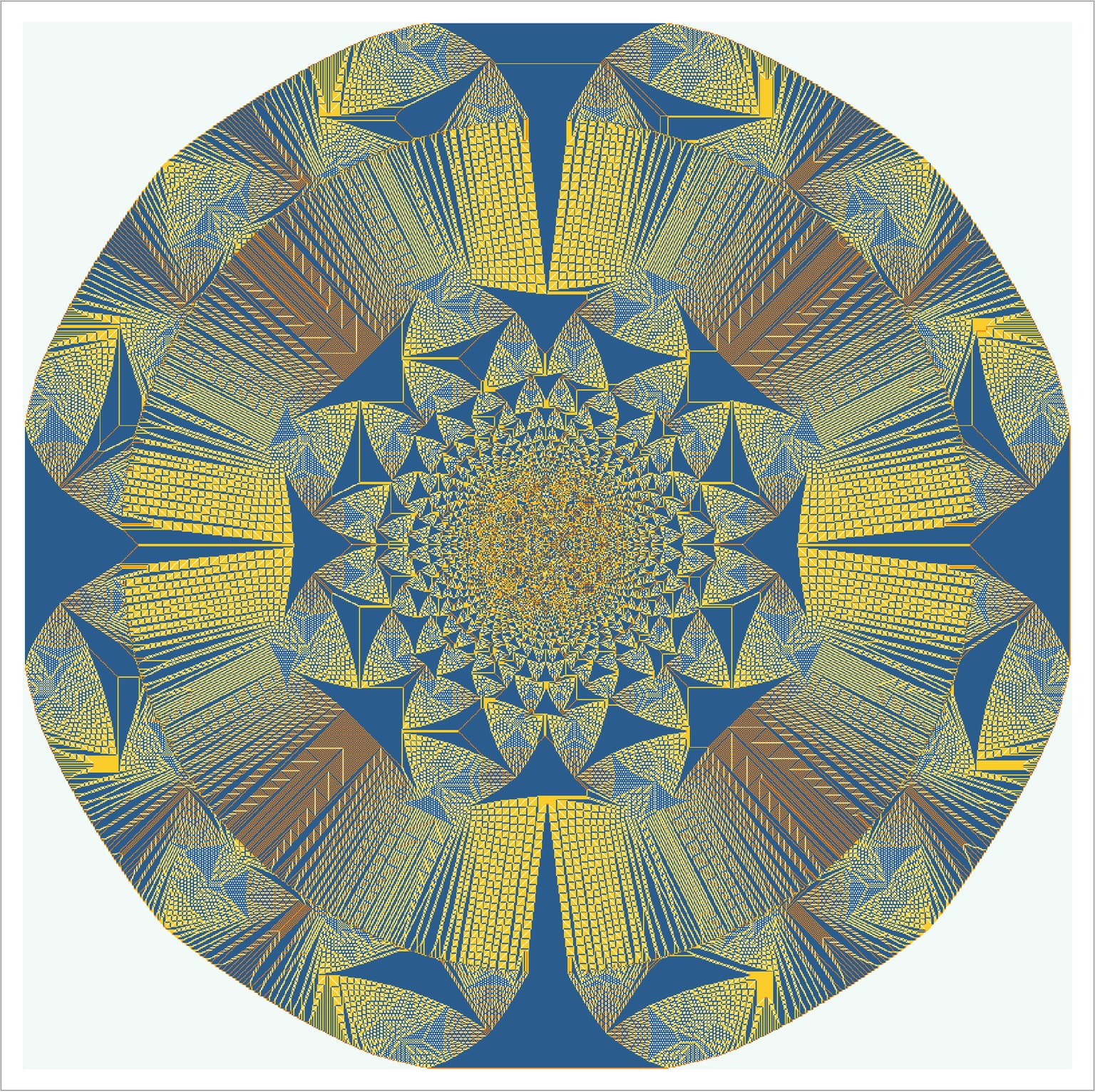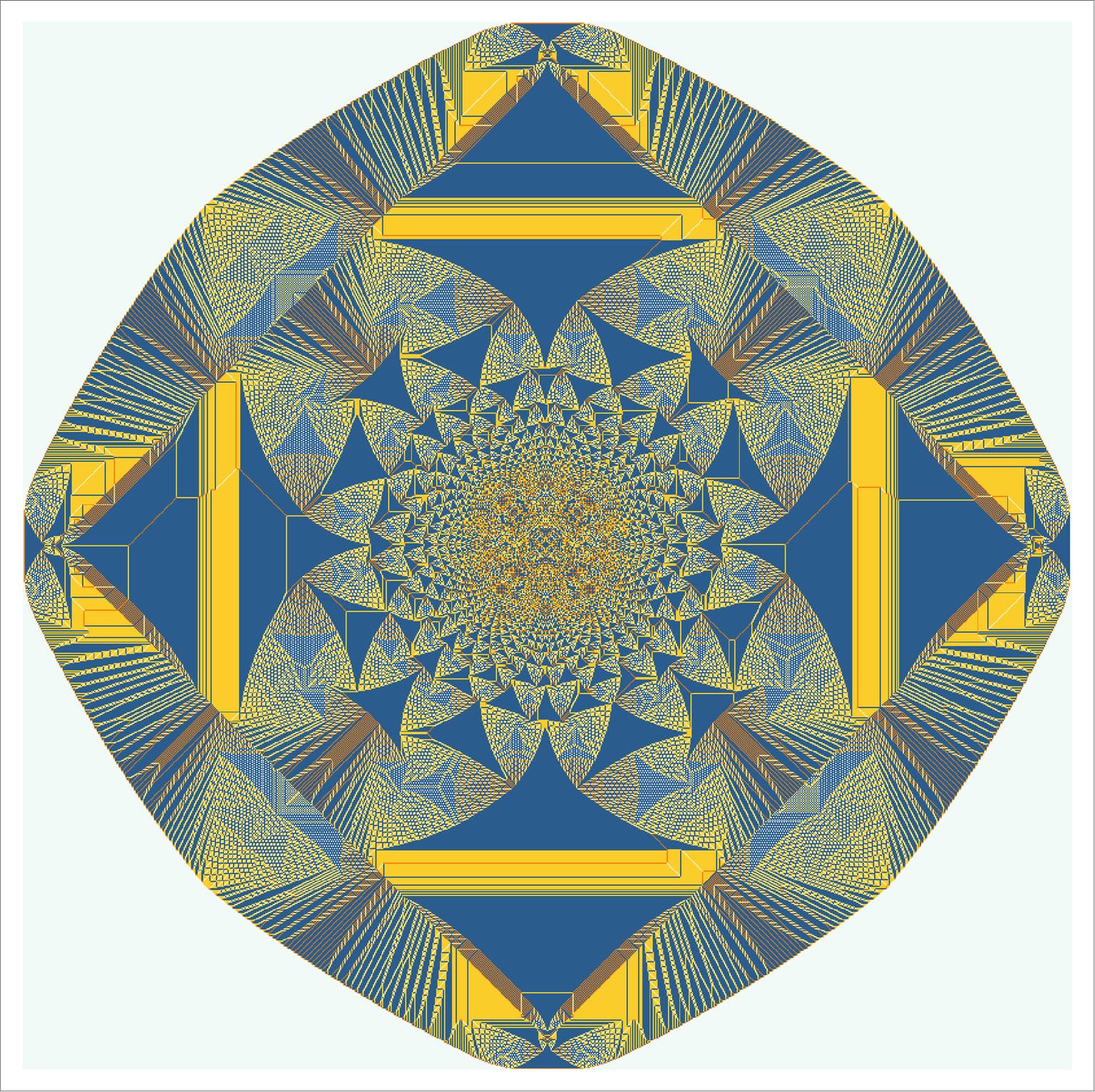2018 Bridges Conference Nominees' Gallery
Bruce Torrence
Artists
Bruce Torrence
Professor Emeritus of Mathematics
Randolph-Macon College
Ashland, Virginia, USA
Statement
As someone with a passion for the visual arts, I've long been fascinated by tilings, photo-montages, and the ways in which humans process visual information. As a mathematician, I relish the joy and satisfaction that accompanies the hard work of solving a difficult problem. I strive in my own work to present viewers with patterns and symmetry from pure mathematics, to convey a sense of wonder in its intricacy and scale, and to challenge viewers to make sense of what they see.
Artworks

Sandpile Fractile Disk
60 x 60 cm
Archival Digital Print
2018
This mosaic image is built from identically sized square tiles in four colors, with 942 tiles per side. Starting with a square grid, 3 grains of sand are placed on all vertices lying within a disk of radius 400. Then 2^18 additional grains are placed on a single vertex near the center of the disk. The system is then "relaxed" as follows: if a single vertex has four or more grains of sand on it, one grain is moved a unit north, one grain is moved south, one east, and one west. This is called "toppling" a sandpile. This toppling process is repeated until every vertex has fewer than 4 grains. Colors are assigned to vertices by sand count: 0 grains is light blue, 1 is burnt orange, 2 is yellow, 3 is dark blue.

Sandpile Fractile Square
60 x 60 cm
Archival Digital Print
2018
This image differs from the first only in the initial vertices that are "critically loaded" with 3 grains of sand. In this case, these vertices lie within a square whose diagonals are horizontal and vertical, 900 units in length. Again, 2^18 grains are then added near the center of the square, and the system is relaxed. The outline of the original square can be seen in the image, just as the outline of the original critically loaded disk can be seen in the other. The slight asymmetry in both images is due to the fact that the vertex where the 2^18 grains are added is not exactly at the center of the critically loaded disk or square.